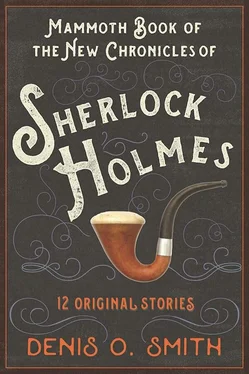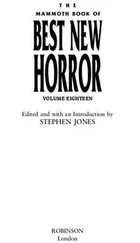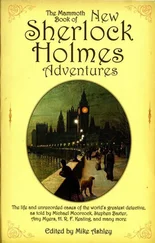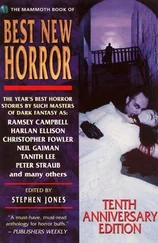‘I can make nothing of them,’ I remarked after a moment.
‘Well, of course, if they are cryptograms of some sort, that is what you would expect,’ responded my companion. ‘They could hardly be considered very successful as secret messages if their meaning were instantly obvious. There are, however, some observations we can make before we begin. First, to judge from Henry Cosgrove’s remarks to his brother, this is a form of cipher the two of them had used as boys, so it should not be too difficult for two grown men to solve. Second, although it must, as I say, appear opaque to a casual observer, otherwise it fails as a cryptogram, it must also be perfectly clear to one who knows the secret, otherwise it would fail on that account. I am therefore confident of getting to the bottom of the matter before I leave this room tonight.’
Holmes fell silent then, and remained staring at his blackboard in perfect immobility for some time, save only when he transferred his gaze for a moment to the paintings. Confident of solving the puzzle he may have been, but when our supper was brought up shortly afterwards, he was still sitting in silence, with no indication that he was making any progress. For myself, I had given up on the inscriptions and was examining all the other differences between the two paintings. In fact, there were not many. The depiction of the tomb, the trees about it and the landscape beyond was identical in both pictures, save only that in the picture which mentioned a fountain in the inscription, a small fountain could be seen far in the distance. In the foreground, however, there were a few more obvious differences between the pictures. The rustic character was the same in both, but the little rabbits about his feet were quite different. In Dryson’s picture there were three rabbits, but in Tacolstone’s – the one with the fountain – there were five. The ducks, too, were different. In the first picture there were just two of them, but in the second, five. Whether these differences were of any significance, or merely represented a whim on the part of the artist or his patron, I could not imagine, but I was sure that if anyone could work out the meaning of these differences and solve the puzzle, my friend Sherlock Holmes could.
We had been eating our meal in complete silence for some time, my companion’s gaze alternating rapidly between the blackboard and the paintings, and hardly ever resting on the plate before him, when he abruptly put down his knife and fork with a clatter.
‘I have it!’ cried he. ‘It was the meaning of the ducks I could not see, Watson, but now I understand it all! Now I know where Henry Cosgrove hid the Bellecourt diamonds!’ Then he fell to laughing, as he picked up his cutlery once more and finished off his meal, almost choking as he did so. ‘It is often the case with such things,’ said my friend in a tone of satisfaction, as he stood up and took his pipe from the mantelpiece. ‘You struggle for a while with individual parts of the puzzle, and feel you are making no progress at all, and then, in a moment, like the break of dawn upon the dark sea, light falls upon the whole at once and all is illuminated.’
‘I am eager to hear your solution,’ I said, joining him beside the fire, as he threw on a few more coals and poked it into a blaze.
‘It is soon explained,’ he began. ‘It is essentially a very simple little cipher, as I was sure it must be. Some of the words in the tomb inscriptions are important, and some are completely unimportant and are present only to disguise the true message. The trick, of course, is to identify those words which are significant. This is where the animals come into the matter. In the picture with three rabbits, every third word in the inscription forms part of the secret message; and in the picture with five rabbits, every fifth word. The function of the ducks – which I confess I could not see at first – is to indicate the word in the inscription at which the secret message begins. Thus, in the one with two ducks, the true message begins at the second word; and in the one with five ducks, it is at the fifth word.
‘If we look at the inscription on Mr Dryson’s picture first,’ he continued, taking a stick of chalk and stepping to the blackboard. ‘This, as you see, is “For thirty years my feet marched, On from east and west, To each corner of the dew-laden far south, Never resting then, now laid down at last”, and the picture contains three rabbits and two ducks. Therefore we begin at the second word – “thirty” – then pass over the next two words and find the fifth is “feet”. The next significant word is the eighth word, “from”,’ he continued, underlining each of these words in turn, ‘and the next “west”, then “corner”, then “dew”, then “south” and, finally, from the last line, “then” and “down”. The whole hidden message is thus revealed as “thirty feet from west corner, dew south, then down”, in which the word “dew” is obviously meant to stand for its homonym, “due” – a little touch of ingenuity and imagination which I find admirable, I must say. The diamonds are therefore hidden – probably buried – thirty feet due south from the west corner of some building or other structure.’
‘Yes, but where?’
‘To learn that, we must consult the inscription on the other picture. This, as you see, is “Death where is thy victory? Peace doth fill these parks While water from the fountain Doth sparkle on the rocks”, and the picture depicts five rabbits and five ducks. We therefore underline every fifth word, beginning with the fifth word itself,’ he continued, suiting the action to the word, ‘which gives us “victory, parks, fountain, rocks”.’
‘What on earth is that supposed to mean?’ I asked. ‘Does it refer to the Eldersly estates in Yorkshire?’
Holmes shook his head. ‘The original painting may have been done upon the Eldersly estate, but I shouldn’t imagine that Henry Cosgrove had the slightest interest in that. All he wanted was some way of conveying information to his brother as to where the diamonds were hidden and he hit on the idea of using these pictures to do it. The diamonds themselves will almost certainly be somewhere in London.’
‘Where? And what is the point of the word “victory”?’
‘Cosgrove would not have wanted to make the location too obvious, and I think he has taken the opportunity to make his cryptic message read a little like a genuine epitaph by adapting those well-known lines from Saint Paul’s epistle, “O Death, where is thy sting? O Grave, where is thy victory?”. But I strongly suspect that the word “victory” is really standing in for Victoria and that the reference is in fact to Victoria Park in Hackney. He could be confident that his brother would recognise the allusion. The two of them grew up in the East End and probably paid many visits to the park – which, in my experience, incidentally, is often referred to locally as “Vicky Park”. Have you ever been there, Watson?’
‘Once, at least, when a rather entertaining brass-band competition was taking place there. It’s a pleasant spot. But the inscription refers to “parks”, in the plural. What does that mean?’
‘It certainly appears to be a plural, but that would really make no sense in any context and I suspect, therefore, that although the apostrophe is absent, it is in fact intended to be a possessive. The whole phrase therefore should be read as “Victoria Park’s fountain”.’
‘I don’t want to spoil your theory,’ I said, ‘but I am fairly certain that there is no fountain in Victoria Park.’
‘You are quite right, Watson. There is no fountain there, at least, not in the obvious meaning of the word. What there is, though, I seem to recall, is an unusually large and highly ornate drinking fountain, donated by some philanthropist several years ago. That, I think, is what is being referred to. I suspect that Henry Cosgrove instructed the artist to add a distant fountain to that version of the picture with the deliberate intention of obfuscating the issue.’
Читать дальше












